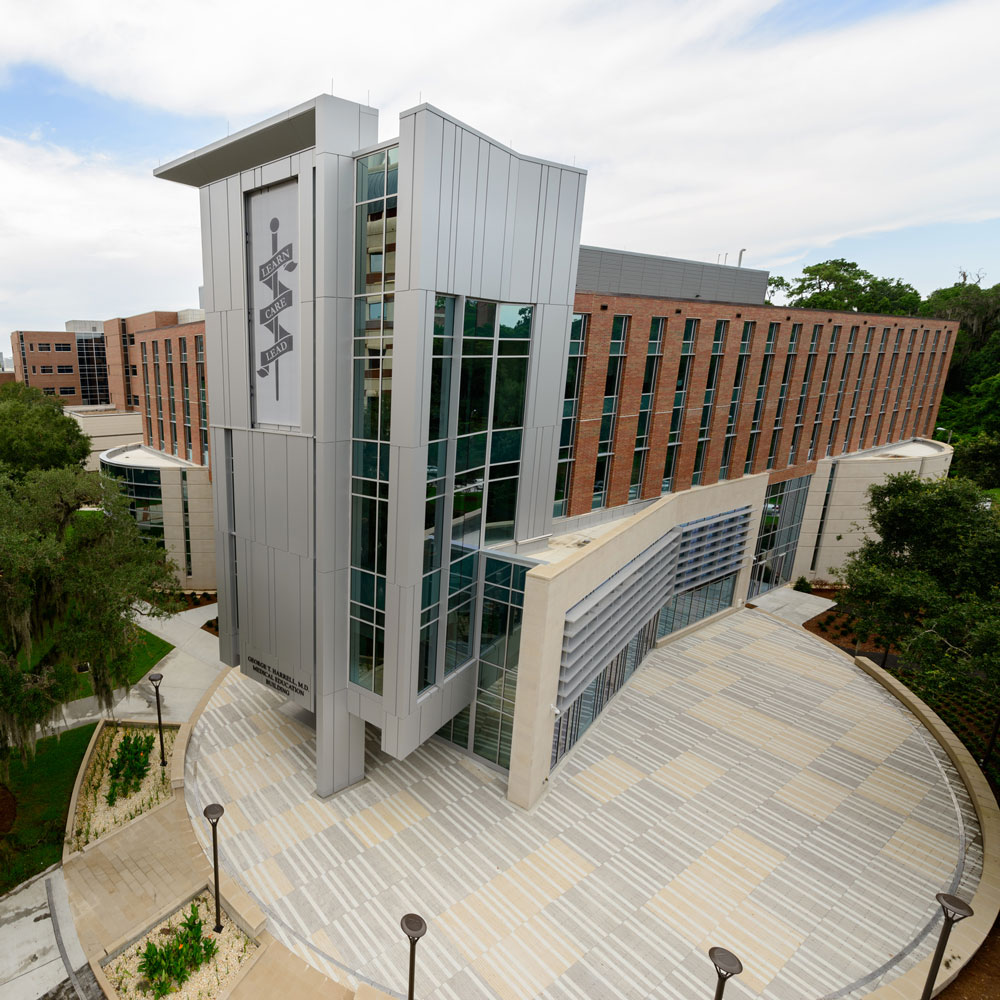
After years of planning and construction, a historic day for the University of Florida has arrived with the unveiling of the nation’s premier medical education facility.
The George T. Harrell, M.D., Medical Education Building, which opens its doors to students July 29, is designed to support the UF College of Medicine’s updated medical education curriculum as well as the training of students from the other UF Health Science Center colleges and staff from UF Health to ensure the highest level of patient care. The 95,000-square-foot space will provide a dynamic environment for all learners as they hone the skills necessary to respond to society’s changing health care landscape.
“This new building provides a model for the entire university — architecturally and pedagogically. In this model, teaching is an important driver of our university’s rise among the best universities in the country,” said Kent Fuchs, Ph.D., president of the University of Florida. “And with this rise, our medical students and health care providers throughout UF Health become ever more prepared to care for patients and to join all UF graduates in helping to bring prosperity and health to the world.”
The $46 million facility, located on the north edge of the UF Health Science Center campus on Newell Drive across from the Evelyn F. and William L. McKnight Brain Institute, includes spaces for collaboration, quiet study and reflection, and hands-on interprofessional and team-based education.
“The Harrell Medical Education Building embodies the commitment by the University of Florida and UF Health to medical and health care education of the highest order,” said David S. Guzick, M.D., Ph.D., senior vice president for health affairs at UF and president of UF Health. “The building exemplifies how to design a space around a forwarding-looking curriculum. It will provide an identity that our students and faculty can be proud of as they set the standard for medical education.”
Named after the college’s visionary founding dean who pioneered the expansion of the UF Health Science Center in the 1950s, the four-story building features a specially designed atrium surrounded by glass, metal and wood accents, providing a bright and welcoming entrance that fosters interaction among students, trainees, faculty and staff. The first floor includes two 4,600-square-foot circular learning studios wired to accommodate collaborative and applied learning activities as well as the medical school admissions office and the H. James Free, M.D., Center for Primary Care Education and Innovation, reflecting the college’s commitment to primary care within the state of Florida.
The second floor is designed to address student needs with additional classrooms, gathering and small-group learning spaces and the Office of Student Affairs.
The top two floors of the Harrell Medical Education Building are dedicated to practice-based learning with a learning and assessment center featuring 18 standardized patient examination rooms, two hospital rooms and several classrooms. The state-of-the-art experiential learning theater on the fourth floor can be configured to represent hundreds of simulated health care scenarios to help bring clinical situations to life and teach students, residents and health care professionals new and complicated, high-risk skills.
“The best medicine and patient care are delivered by interdisciplinary clinical teams — physicians, physician assistants, nurses, therapists and many other health professionals — who come together in examination rooms, operating rooms, intensive care units and many other spaces to help patients heal,” said Michael L. Good, M.D., dean of the UF College of Medicine. “With that in mind, we have moved from the lecture hall to active, team-based learning in the same type of small-group environments that our students will encounter as practicing physicians and physician assistants.”
Construction of the facility was driven largely by philanthropy, with $31 million raised for the building by alumni and friends of UF. Charles Perry Partners Inc., of Gainesville, was awarded the contract to construct the Harrell Medical Education Building. Heery International and Ballinger designed the facility.